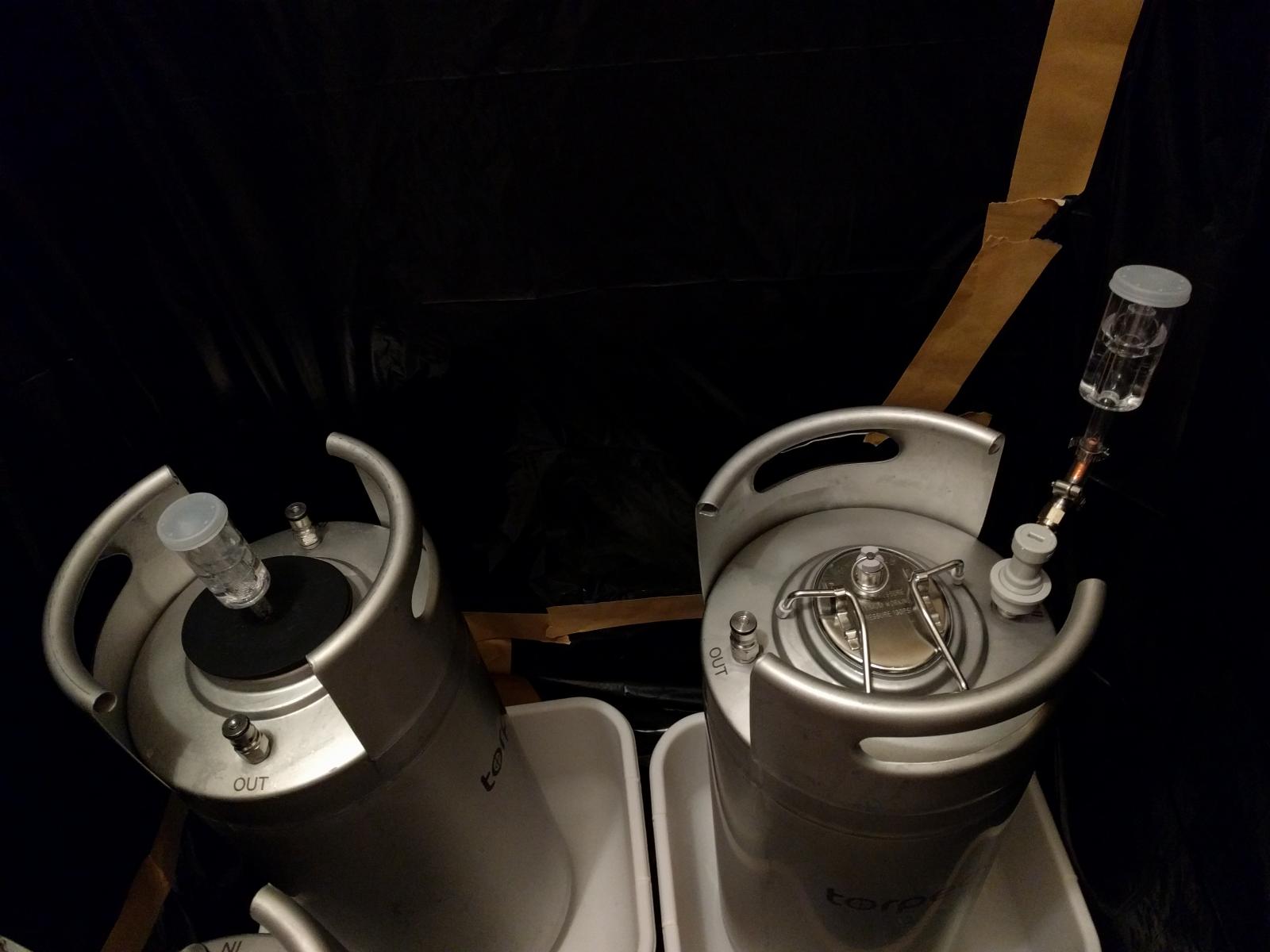I recently purchased some kegs to use as primary/secondary fermenters.
Recipe calls for removing the fruit bag after a couple of days (even when primary isn't done!). Doing so would expose everything to oxygen, so I'd like to avoid that if possible. (Is that paranoid?)
Instead of removing the bag, could I just rack from one keg to another with CO2, then pull the bag out of the empty keg? Or will racking during active fermentation (racking without oxygen exposure, specifically) impact the wine negatively? I haven't bent the liquid tubes, so I could deliberately transfer the sediment, too, if that matters. I've found plenty of posts saying not to do this in non-keg context, but none of them are talking about racking when no oxygen is being introduced.
As part of this idea, I built an airlock that attaches to the gas-in post. This seems like a good way to further reduce chance of oxidation since it can be removed quickly without fumbling with the rubber seal.
Thanks!

Recipe calls for removing the fruit bag after a couple of days (even when primary isn't done!). Doing so would expose everything to oxygen, so I'd like to avoid that if possible. (Is that paranoid?)
Instead of removing the bag, could I just rack from one keg to another with CO2, then pull the bag out of the empty keg? Or will racking during active fermentation (racking without oxygen exposure, specifically) impact the wine negatively? I haven't bent the liquid tubes, so I could deliberately transfer the sediment, too, if that matters. I've found plenty of posts saying not to do this in non-keg context, but none of them are talking about racking when no oxygen is being introduced.
As part of this idea, I built an airlock that attaches to the gas-in post. This seems like a good way to further reduce chance of oxidation since it can be removed quickly without fumbling with the rubber seal.
Thanks!



